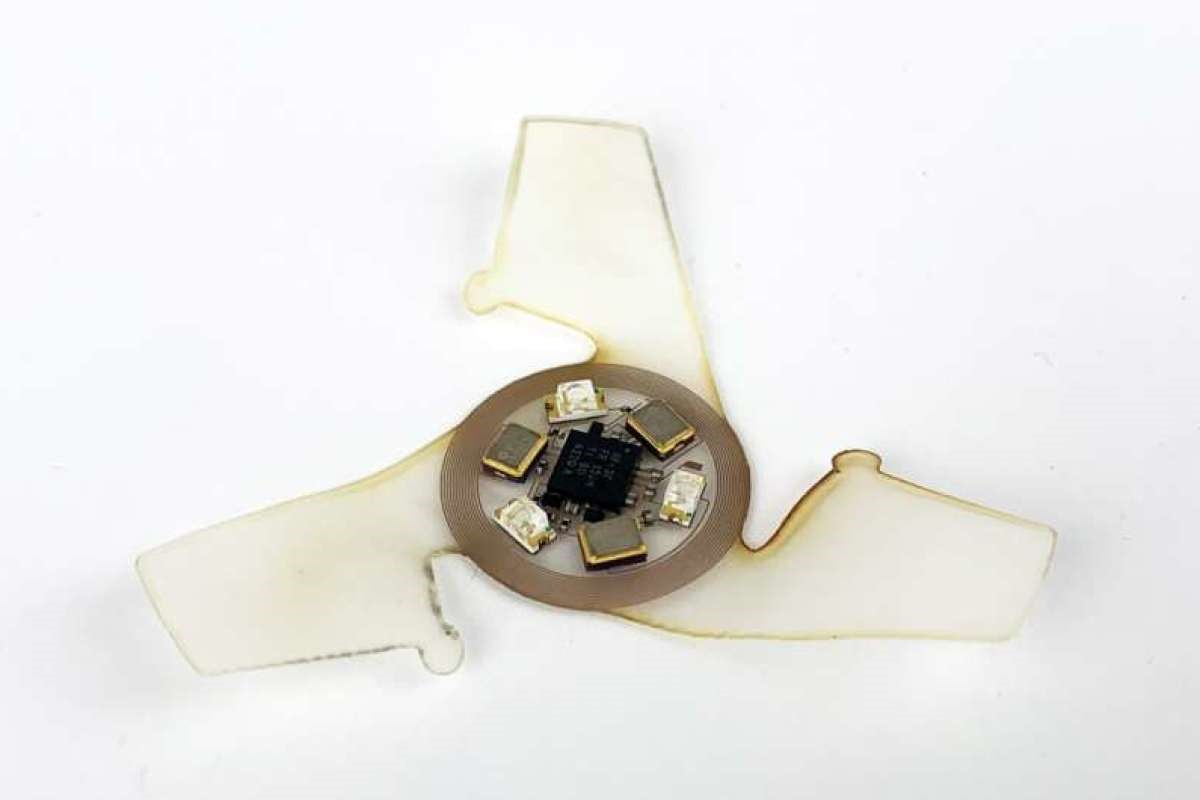
The smallest flying structure ever built
Inspired by the way trees like maples disperse their seeds using little more than a stiff breeze, researchers developed a range of tiny flying microchips, the smallest one hardly bigger than a grain of sand.
The micro-fliers comprise two parts: millimetre-sized electronic functional components and their wings. This flying microchip or 'micro-flier' catches wind and spins like a helicopter towards the ground.
The micro-fliers can be packed with ultra-miniaturized technology, including sensors, power sources, antennas for wireless communication, and even embedded memory for data storage.
In demonstrated examples, the team included sensors, a power source that can harvest ambient energy, memory storage and an antenna that can wirelessly transfer data to a smart phone, tablet or computer.
In the lab, the team outfitted one device with all of these elements to detect particulates in the air. In another example, they incorporated pH sensors that could be used to monitor water quality and photodetectors to measure sun exposure at different wavelengths.
Team goal was to add winged flight, with the idea that these capabilities would allow them to distribute highly functional, miniaturized electronic devices to sense the environment for contamination monitoring, population surveillance or disease tracking.
They used degradable polymers, compostable conductors and dissolvable integrated circuit chips that naturally vanish into environmentally benign end products when exposed to water.
 English
English Arabic
Arabic


